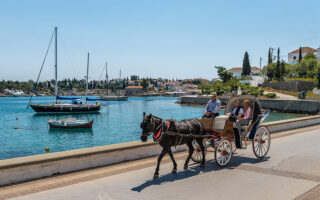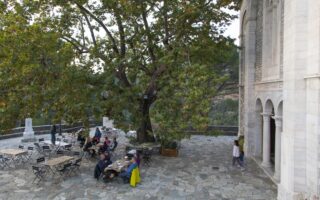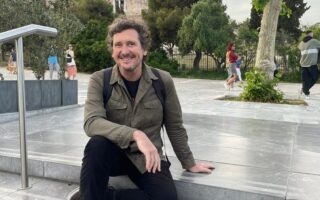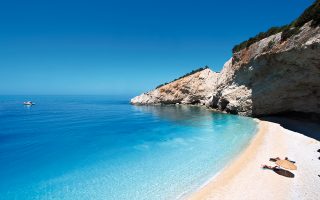Cretans Know a Thing or Two About Good Living
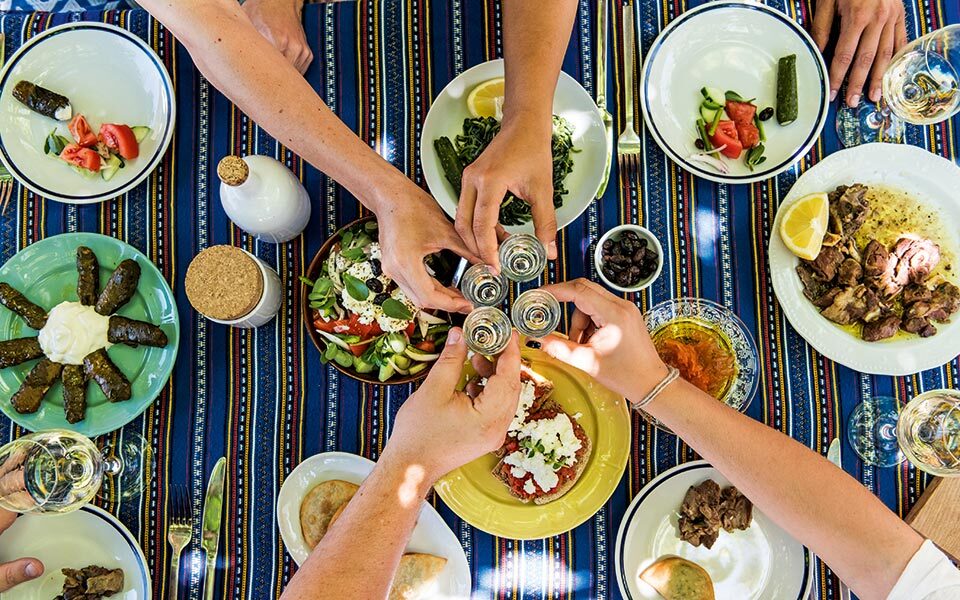
The Cretan diet and the Cretan way of life have acquired international recognition through the newly-launched Center of Excellence for Health and Wellness, established in Rethymno last May. The aim of the center, which has an academic partnership with Harvard University, is to raise the awareness of the international and local community regarding the significant benefits of the Cretan diet for the improvement of health.
The members of the Advisory Committee of the Center, headed by Dr. Stefanos Kales, Professor of Medicine and Public Health at Harvard Medical School, spent four days in Crete, where they were guided by Grecotel on a journey that followed the Cretan diet from its source to the guest’s plate. While participating in this journey, we tried to break down the famous Cretan way of life and capture the individual “ingredients” it consists of.
Crete begins and ends around a table. Agreco Farm in Adele, Rethymno is a fine example of the combination of tourism with the agri-food sector but it also offers an overall picture of the products that are found on this table. Demetrios Kalaitzidakis, Operations Director of Grecotel, has mobilized a group of people and a set of actions to communicate the exuberance and the multidimensional nature of the Cretan diet.
The farm includes areas and corners where the visitor has the chance to get acquainted with processes such as milking, beekeeping, growing vegetables and olives and raki (also known as tsikoudia, a pomace brandy) distillation. In its central “square,” built in a way as to resemble a traditional village, ladies from the surrounding area are recruited to show visitors how to prepare delicacies such as myzithra cheese pies or stuffed vegetables, while at the grocery store you will find thyme honey, organic olive oil and wine, various tsikoudias and other food products produced by Agreco. The group of “experts” who frame this experience is quite impressive and ranges from food collectors, who are well acquainted with the wild greens and herbs of the island, to women’s cooperatives and cheese scientists.
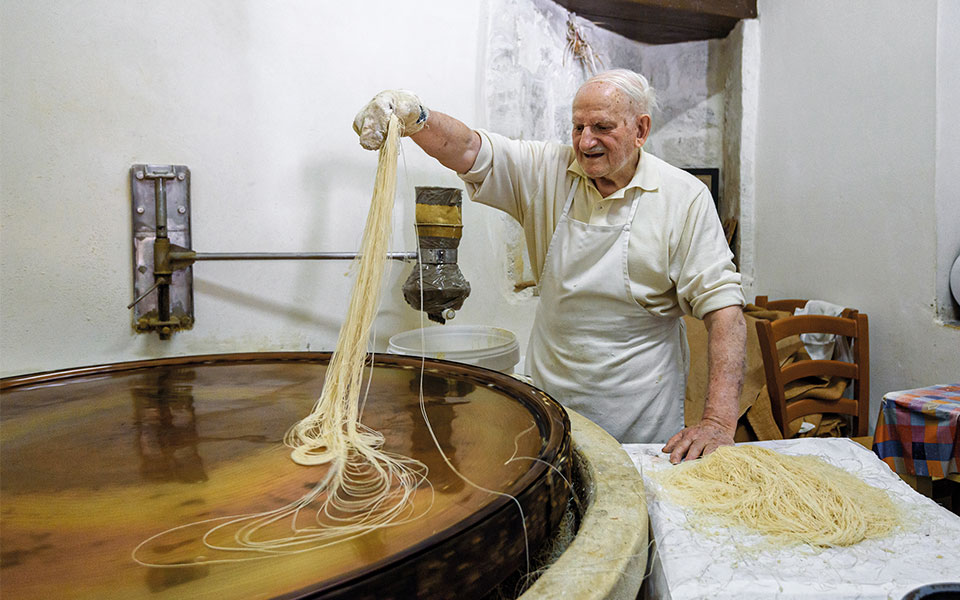
The City of Rethymno and the Valley of Amari
The green valley of Amari is an ideal setting to discover, or learn more about, Cretan cheese. On its gentle slopes, plane trees alternate with olive trees and fruit trees, and it’s not uncommon to encounter flocks of sheep and goats – the wild greens and herbs give milk and meat a special flavor. It’s the perfect place to visit the cheese-dairies and see the rooms where hundreds of gruyère heads ripen. Amari Dairy, whose cheese-dairy is located in the area of Kalogeros, is famous for its fresh myzithra, its galomyzithra and its aged gruyère. Kalligiannis Dairy in Arkadi stands out for its truffle gruyère, while Tzourbakis Dairy in Mixorrouma produces, among other things, excellent anthotyro cheese and low-fat goat gruyère.
The gastronomic tour continues in the alleys of the old town of Rethymno, where it traditionally starts from the phyllo pastry making workshop of Giorgos Hadjiparaschos. Since 1958, the pastry master has been making kadayif dough and phyllo pastry by hand, still using the original equipment of that time. Both of these processes are so impressive that they attract a loyal audience in the Venetian building where the workshop is housed. Mr. Hadjiparaschos and his son skilfully spread white circles of dough on tables four meters wide. They toss them in the air as if they were huge sheets and then let them fall and rest on the table, thus forming a giant dome. Then, they stretch their edges, until the sheets become thin and transparent like rice paper. The circular motion of the large rotating pan on which the dough “yarns” and the kadayif are spread, is almost hypnotic. The visit here ends sweetly, with a piece of baklava or kadayif.
A special point on the gastronomic map of the old town is the traditional wood-fired oven of Alexandrakis, where every morning at four o’clock, the oven is lit to bake loaves of bread and other goods, such as barley rusks and rusks with oil oregano. At the shop of the 35N distillery one can find quality bottled tsikoudia, made solely from the Cretan grape variety Muscat of Spina, which stands out for its aromatic character.
A few meters away, Chef Michalis Hasikos merges Cretan cuisine with elements from Asia Minor in his kitchen. At Hasika Restaurant, simplicity is the protagonist, as you try the excellent carob bread and timeless combinations, such as xinohondros (ground wheat with sour milk) with eggplants or grouper with okra. The tour around the old town ends with a visit to Papalexakis Instrument Workshop. In their tiny workshop, father and son make lyres and other traditional musical instruments.
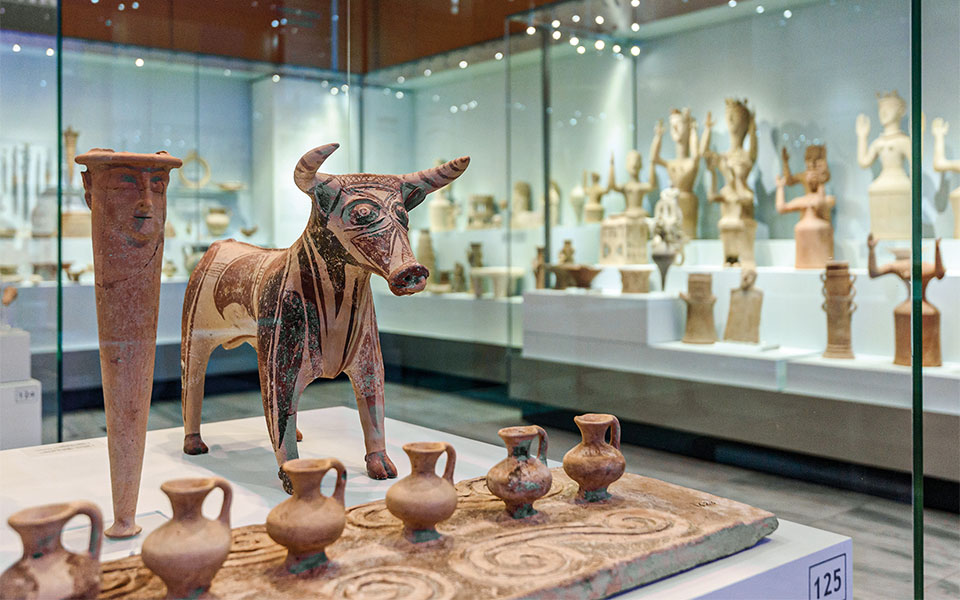
Knossos
One of the main elements of the Cretan way of life, apart from gastronomic traditions and music, is people’s close contact with nature. The archeological site of Knossos is a famous example of this, and the beginning of summer is one of the best times of the year to experience the strong connection of the oldest city in Europe with its natural environment.
Apart from the love for nature, which is a key theme at Knossos, the Minoan antiquities from the site also reflect the philosophy of well-being. This is evidenced, among other things, by everyday objects from the Bronze Age that are exhibited in the showcases of the Archaeological Museum of Irakleio. Among them, an elaborate clay teapot, in which the ancient Minoans would boil their infusions, and a construction on which meat was cooked on skewers. Finds like these suggest a love for small luxuries and a penchant for grooming – something that has hardly changed since that time.
Lyrarakis Winery
The place of wine on the Cretan table is equally timeless. From Knossos begin lines of vineyards that playfully run along the slopes for many kilometers to the south. Some of them even grow ancient indigenous varieties, which were in danger of disappearing in the decades when market interest was monopolized by French wines. Lyrarakis winery in Alagni is a place that has contributed to the revival of traditional varieties, such as Plyto, Dafni and Melissaki from roots found on Psiloritis Mountain. Tastings here include much more than wine and starts with agourida, the aromatic juice made from immature grapes collected in July. It continues with a series of local wines and is paired with olive oil and cold cuts and cheeses from the surrounding area. Sometimes it also contains surprises, such as the crunchy grape stalks that were offered to us during our visit by the winemaker Giorgos Lyrarakis to show us what he thinks the essence of Cretan cuisine is: the ingenuity to create a delicious meal even when there is not much at your disposal.
Most likely, of course, in today’s Crete, the table to which you will be invited will have a lot on it and that those dishes will reflect both the place and the people who developed the recipes over the centuries. The moment when you will enjoy the richness of such a table and the company around it – without rushing to start – is the epitome of the charm of the Cretan way of life.
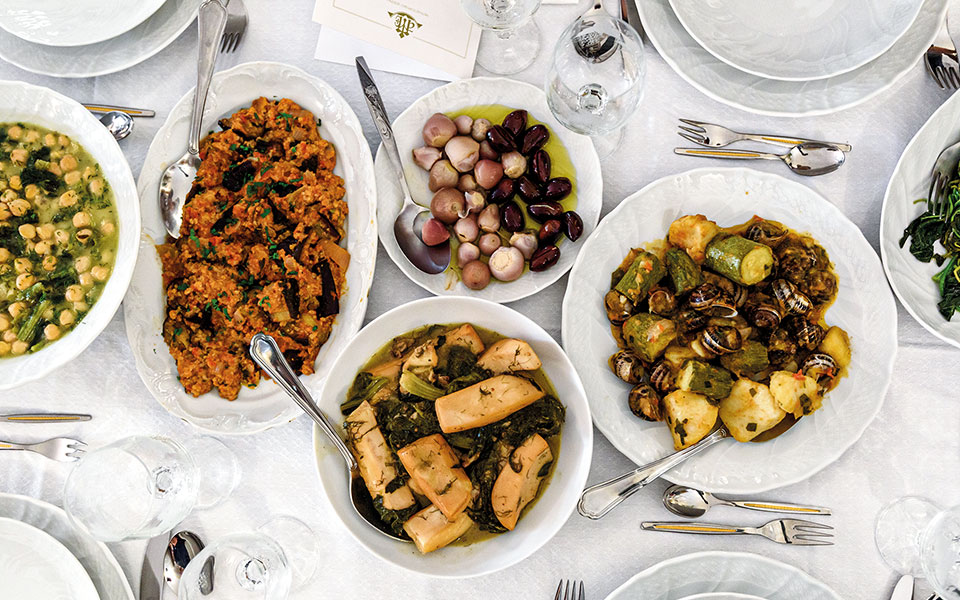
Dr. Stefanos Kales: “Crete Never Ceases to Amaze Us”
The Professor of Medicine and Public Health at Harvard Medical School explains the reasons why the newly formed center, that was his own inspiration, focuses on the Cretan way of life.
How was the idea for this Center of Excellence originally conceived?
The trigger was the collaboration of the Culinary Institute of America and the University of Barcelona, in order to create a center for the Mediterranean diet. As a third generation Greek, I saw it as a challenge and I wanted to find a way to establish something similar in Greece, which I consider to be the most suitable place for such a project. So I started with a closed-door symposium at the Radcliff Institute at Harvard on promoting the Mediterranean diet to non-Mediterranean people. Experts from the Culinary Institute of America participated in this symposium and were very positive about the idea of this center. When I presented the proposal in Greece two years later, it was embraced by the Greek National Tourism Organization (GNTO), the regional authorities of Crete and the association of travel agents of Crete, while Grecotel took on the role of strategic partner, helping us with its infrastructure and know-how. Especially the Agreco organic farm and the close connection of the company with the agri-food sector are very important elements for us, as we want to create a space where we can provide experiential but also sustainable experiences.
Why was the announcement of its establishment made in the Vatican?
The first official announcement was made at the Pontifical Academy of Sciences, as part of a closed conference on the value of olive oil and the Mediterranean diet, which was attended by top colleagues from America, Spain, Italy, Israel and Greece. Many of them agreed to take on a consulting role in setting up our own center. Among them are Walter Willett, one of the world’s leading dieticians, Greg Drescher, director of strategic initiatives at the Culinary Institute of America, and Miguel Angel Martinez, co-head of the largest PREDIMED study ever on primary cardiovascular prevention.
Why did you choose Crete as your headquarters?
The business model we have developed can definitely be applied in many parts of Greece. Working with Grecotel, we have listed twelve different destinations. However, we chose Crete because of the tradition of the Cretan diet, which dates back thousands of years, but also because of historical nutritional studies (such as the famous Seven Countries Study), in which the Cretan diet stands out, in terms of its positive effect on longevity and the prevention of cardiovascular diseases and of various types of cancer. The Seven Countries Study “gave birth” to the very term Mediterranean nutrition. Therefore, as my friend and Operations Director of Grecotel, Demetrios Kalaitzidakis, says, “Cretan is the crown of the Greek diet.” But there are also practical reasons. Crete enjoys pleasant temperatures every month and is an ideal destination to extend the tourist season. It is rich in places related to culture and to the traditional way of life. Finally, the Cretans are famous for their hospitality and dignity. For Americans, hospitality in Crete is an almost legendary concept. The locals will treat you to tsikoudia, they will invite you to see how kalitsounia (Cretan snack made of dough, with sweet or savory filling) are made, they will share with you everything that they have. I have never heard of anyone who visited to Crete and did not like it – and this comes from me, with family origins from Northern Epirus. The Cretans embrace the visitor and the project itself. That’s why I’m sure it will succeed.
How did the team of experts of the Center of Excellence get acquainted with the Cretan diet?
It is important to know about the Cretan diet, but it is even more important to experience and try it! Right after the Vatican, a four-day visit to Crete followed in early May. There, under the guidance of Demetrios Kalaitzidakis, we had the opportunity not only to taste local flavors, but also to experience the Cretan way of life. We were guided to the Lyrarakis Winery in Alagni, we tried apaki (traditional Cretan smoked and salted pork meat) from Kassakis Butchery, we visited Amari Dairy, we were introduced to the logic of fasting by the abbess of the monastery of Aghia Irini in Rethymno and we talked to people who specialize in all the individual food products. The visit was a great success and the participants left very satisfied. Although they teach healthy eating in the best universities in the world, Crete managed to surprise them with something different every day. The visit helped them experience the results of the Seven Countries Study.
What are the next steps?
We are preparing an international conference entitled “Cretan Lifestyle: Theory & Practice” for the beginning of November at Creta Palace in Rethymno. We are interested in developing partnerships with institutions in Crete and with Greek and foreign universities and to conduct researches covering the whole range of nutrition, from production to consumption. Respectively, the scope of the center’s action is very large. It starts from providing training to chefs and restaurant staff and reaches to the development of medical tourism services. However, we want to start with small and steady steps, finding partners and securing the support required for the implementation. If you allow me to make a comparison with the Greek restaurants of the Greek community abroad, which I am familiar with, from a young age, a successful restaurant starts with a short menu, which is to be enriched with more options only after the basic dishes have been perfected. This is how we should proceed.
This article first appeared in Greece Is (www.greece-is.com), a Kathimerini publishing initiative.

